
 |
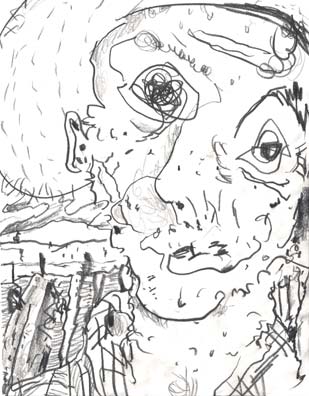
"I thank God for the opportunity to, uh, thank God."
I came across this Sammy Sosa quote while reading the post-mortems on his 13 year baseball tenure for the Cubs. Plainly, the intent is to cast him in a foolish light.
Yet, out of the mouths of babes, or in this instance, the mouth of Babe’s successor...
Sammy’s circular logic is, according to at least one Western theologian, a grand slam. Meister Eckhart, the great 14th century mystic said: “If the only prayer you say in your whole life is ‘Thank You’, that would suffice.”
A mystical malaprop?
 |
 |
 |
 |
 |
 |
 |
 |
 |
 |
 |
 |
 |
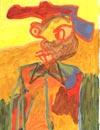 |
 |
 |
 |
 |
 |
 |
Today’s post is an inclusive offering of “latenight paintings.” This is an adaptive painting habit which has arisen recently. The end of each day has become the time for a few quick minutes of wild liberty.
During the daylight hours, it’s been all business: working the current oil painting, honing essays, connecting with Thank You Project and TINSQUO inquiries, laying the groundwork for longterm pieces, seeing notable NYC shows and simply remembering to eat. Spontaneously, just before bed, I started doing quick acrylic paintings a few weeks back.
The day’s close is now a free, inviolable space of acceptance where the inner-censor is escorted out the door. I’ve noticed that when one area of my painting practice attains a high level of resolve, a counterbalance often develops in response that yields fresh abandon and lively painting.
You might recognize two earlier posts, “alive_again_naturally” and “seeing_reticulated_canopy,” as part of this incipient series. I’ve included them, here, in the chronological sequence that's unfurled this month.
Opening up similar avenues of liberation is the way my painting practice is revitalized time and again. So, this humble series may represent the most crucial of my works. Here also, over time, a deep structure starts to evolve that - in the life of any painter - is noteworthy for its willingness to court failure.
 |
 |
 |
 |
 |
 |
 |
 |
The day began with a panoramic gaze across the Kilauea Caldera on the Big Island of Hawaii. Rising out of the side of Mauna Loa, the caldera rests at an altitude of 4200 feet above sea level. By some measures, though, we were just shy of the summit of the tallest mountain on Earth.
The island’s rain forest was proving itself aptly described with visibility not more than a stone’s throw. Questing, we began a snaking 12 mile descent down the Chain of Craters Road to find the spot where rangers said lava was flowing to the water’s edge. Along the way, road signs denoted earlier lava flows by date: 1969 - 1974, 1982 and the ongoing eruption which has been flowing since 1983.
Suddenly, still high above the volcanic cliffs and Hawaiian waves, the weather cleared. Before us was an immense coastal lava plain extending to the water and laterally to the horizon.
 |
 |
 |
 |
 |
 |
 |
 |
Volcanologist’s have a glossary of terms to describe the intricacies of their passion similar to the lexicon of Eskimo words for snow.
Kilauea produces two principle kinds of lava. Fortunately, our journey was across pahoehoe (pah-hoay-hoay): sharp as glass but with a smooth, bulbous texture. `A`a (ah-ah) is a jumbled stew consisting of broken lava chunks that result in an incredibly jagged and sharp surface. The right conditions can transform pahoehoe into `a`a.
With no clear path for the three mile hike to flowing lava, we asked the ranger to set us off in the right direction. These were her exact words (accompanied by the wry smile often extended from delighted mentor to embarking pilgrim): "Hike onto the lava and follow the yellow markers until they end. Then, there'll be six orange cones at various peaks. You'll see steam vents along the way. When you get to the end of those, look for heat waves, listen for hissing and popping and go in that direction...you'll find it."
 |
 |
 |
 |
 |
 |
This landscape has the topography of a grade 5 river rapid frozen in suspended animation. It’s like the surface of a giant, flaky brownie. Really, though, it isn’t like anything at all. Volcanoes are originators of both earth and metaphors.
The wind was fierce. The sun was bright. We hiked a healthy quarter mile inland from the coastline, averting the thrilling but structurally unsound lava delta.
Lava travels from the summits of volcanoes through lava tubes with blazes of red occasionally visible though skylights. But when its pressure forces the fluid Earth to meet the air, huge open lava beds can be encountered as it oozes to gravity’s call at the water’s edge.
True to the ranger’s words, as we moved through the silver-black landscape of ropy rock, lava coils and structures evocative of earthen entrails, we began to see little wisps of steam and, eventually, feel gusts of warm, sulfurous wind.
Then, we were upon it.
 |
 |
 |
 |
The mouth gapes. Words fail.
There is no sensical aesthetic or scientific response. I did not feel what is conventionally called awe - with its sense of reverence cut with fear. It was simpler than that.
Love is the most apt description. I felt love.
The lava felt sentient, animate and purposeful. Watching it go about its work, toes crawling across old flows, was fulfilling work itself.
The distinction between animate and inanimate seems arbitrary. Denying rock “animate” or even “sentient” status seems a perverse kind of anthropomorphism - expecting rock to exemplify animation in a manner consistent with human understanding of that attribute. Encountering exposed magma illicits a knowing that precedes all that is human. It made me perceive millions of years as a completely reasonable timespan.
As soon as we turned to start the three mile return hike, I registered a paradigmatic shift in my perspective. Everywhere, the rock I saw - see - bears a latent liquidity. Now and forever, the bedrock upon which this, and every, city rises is liquid rock - but a phase change away.
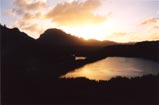 |
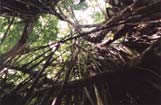 |
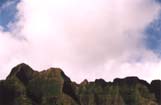 |
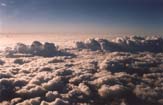 |
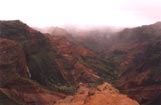 |
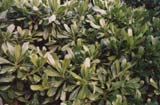 |
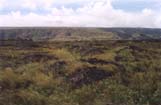 |
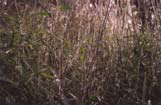 |
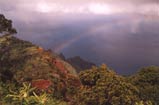 |
Last month, I was wending my way through the grocery aisle when the store’s piped music broke into the familiar opening strums of “A Horse With No Name” by the 70’s folk group America. I quickly reckoned that this same occurrence could be happening in countless, random convenience stops across the country.
It’s just that this one was in a town called Kailua on the island of Oahu...in Hawai’i.
As for many, the song triggers deep memories - delivering me to an ancient time when, curled beneath the covers, I scanned the radio dial for distant stations and news of life beyond the Corn Belt. In the night, an AM radio signal can travel hundreds of miles across the country’s plains. “A Horse With No Name” was a frequent missive.
The journey - free roaming, liberated from language - in joint company with the nameless horse always sang of an Eden that exists over the horizon, beneath one’s feet, somewhere out in America’s mythic Wild West.
Standing in that Hawaiian grocery aisle, I realized I had traveled to a place beyond reach of the nameless horse and even further than the narrator’s imagination could carry him. At the checkout line, after a journey of nine days, the singer was letting the horse run free “cause the desert had turned to sea.”
To my young, landlocked ears this logic had been unassailable. The horse and rider had arrived at the watery edge of the knowable universe and so the trip, and with it the song, comes to a close.
Yet, there they were, riding through the desert on the remotest archipelago on earth. That bodega at that moment seemed beyond reach of even the strongest AM radio signal in the deep of the night.
Hawai'i is like that. One arrives with that confident certainty of what constitutes The World only to learn that in a place where the newest earth in all creation issues forth, there is no knowable universe only “plants and birds and rocks and things.”

Representing eleven twelfths of 2004, the documentation of the final state of each day's acrylic palette began on 1 February. To scroll through a whopping five foot tall version click here (408K).
This earlier post offers insight into the project's origins.